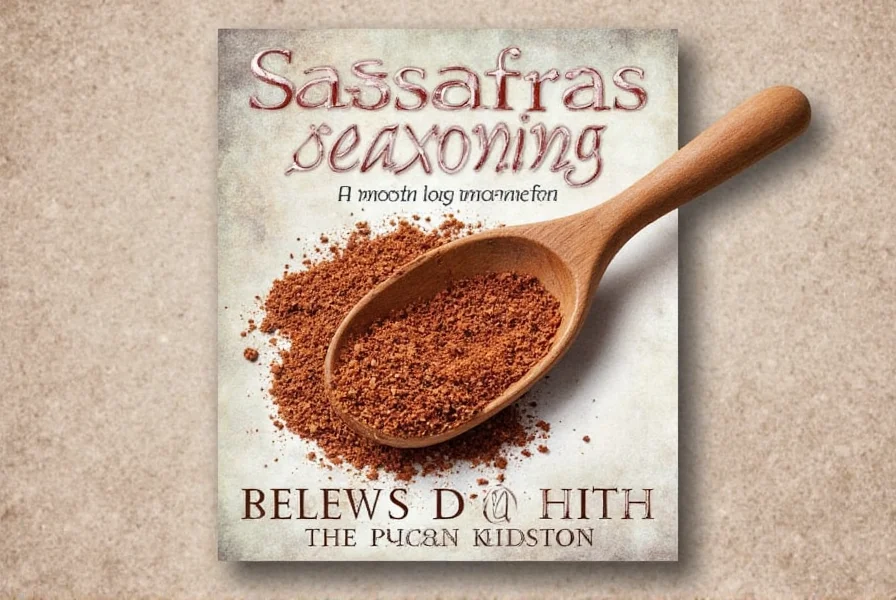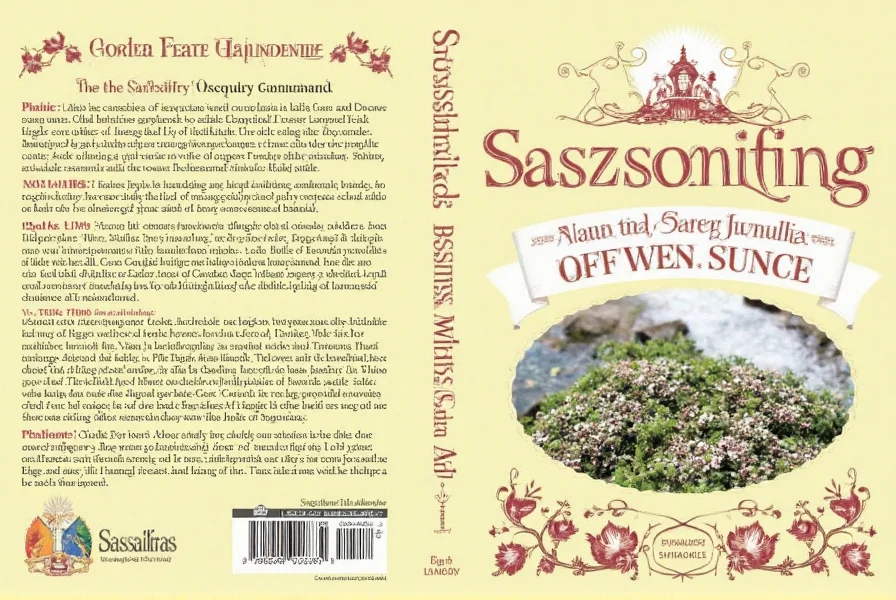Sassafras seasoning is safe for culinary use in small amounts when sourced from reputable brands. The U.S. Food and Drug Administration (FDA) banned sassafras oil in 1960 due to safrole concerns, but commercially available root bark seasoning contains only trace amounts of safrole and is legal for cooking. This guide provides comprehensive information on sassafras safety, uses, and storage to help you use this historic spice confidently.

What Is Sassafras Seasoning?
Sassafras seasoning comes from the dried roots of the Sassafras albidum tree, native to North America. Known for its earthy, citrusy aroma, this spice has been a culinary staple for centuries, especially in Southern cuisine.

A Historical Spice with Roots Deep in Time
Sassafras has a rich history shaped by safety regulations. Indigenous peoples in North America first used it for medicinal purposes. Early European settlers shipped it to Europe as a cure-all tonic. However, in 1960, the FDA banned sassafras oil for food use due to safrole concerns. Today, commercially available root bark seasoning contains only trace safrole levels and is legal for cooking.
Flavor Profile: What Does It Taste Like?
If you're wondering what sassafras tastes like, imagine a mix of lemon zest, root beer, and a touch of pepper. It's aromatic, slightly sweet, and wonderfully complex. In some regions, it's described as tasting like "wild spring" or "the forest after rain."
Culinary Uses: How to Cook With Sassafras
- Gumbo Filé Powder: Perhaps the most famous application of sassafras is in Cajun cuisine as filé powder. It's added to gumbo to thicken the broth and infuse it with a deep, woodsy flavor.
- Seasoning Rubs: Mix it with garlic, paprika, salt, and pepper for a smoky rub on grilled meats or roasted vegetables.
- Infused Oils and Vinegars: Steep sassafras in warm oil or vinegar to create a flavorful base for dressings and marinades.
- Desserts: Believe it or not, sassafras can add an exotic twist to ice creams, syrups, and even cookies.
| Product | Features | Advantages | Best For | Occasions |
|---|---|---|---|---|
| Brand A Organic Sassafras Powder | Pure, organic root powder | No additives or fillers | Health-conscious cooks | Weekend cooking projects |
| Brand B Cajun Filé Blend | Mixed with garlic and onion | Ready-to-use gumbo seasoning | Cajun food lovers | Holiday gatherings |
| Brand C Wildcrafted Sassafras | Foraged from natural forests | Unique terroir profile | Foodies and adventurers | Gift giving or personal use |
Alternatives & Substitutes for Sassafras
If you can't find sassafras, don't panic! Here are a few worthy substitutes:
- Thyme: Offers a similar earthiness, though without the citrus notes.
- Sumac: Adds a bright, tangy flavor that can mimic sassafras' zestiness.
- Fennel Seeds: Great for capturing the licorice-like undertones found in sassafras.
- Star Anise: Brings bold licorice flavor; use sparingly.
How to Store Sassafras for Maximum Freshness
To keep your sassafras seasoning vibrant and potent:
- Store in an airtight container away from light and heat.
- Use within 6–12 months for optimal flavor.
- Keep away from moisture to prevent clumping.
- Label your containers clearly to avoid confusion with other spices.
Frequently Asked Questions About Sassafras Seasoning
Here are answers to some common questions about sassafras seasoning:
- Is sassafras seasoning safe to consume?
Yes, sassafras seasoning made from the root bark is safe to consume in culinary amounts. The FDA banned sassafras oil in 1960 due to safrole concerns, but commercially available root bark seasoning contains only trace amounts of safrole that are considered safe for cooking and seasoning purposes. - What is the main difference between sassafras and filé powder?
Filé powder is sassafras - specifically, it's the powdered form of dried and ground sassafras leaves. The term "filé" comes from the Choctaw word for sassafras. When people refer to sassafras in cooking contexts, especially in Cajun and Creole cuisine, they're often talking about filé powder. - How much sassafras should I use in my recipes?
Sassafras has a potent flavor, so a little goes a long way. For gumbo, start with 1/4 to 1/2 teaspoon per serving and adjust to taste. When using it in rubs or other dishes, begin with small amounts (1/8 to 1/4 teaspoon) and increase gradually until you achieve the desired flavor profile. - Can sassafras be grown at home?
Yes, sassafras trees can be grown in home gardens if you live in USDA hardiness zones 5-9. They prefer well-drained soil and full sun to partial shade. However, harvesting the roots for seasoning isn't recommended for home gardeners, as it requires killing the tree, and wildcrafting sassafras is regulated in some areas. - Why was sassafras banned and is it legal now?
In 1960, the FDA banned sassafras oil for food use due to concerns about safrole, a compound found in sassafras that showed carcinogenic effects in lab animals at very high doses. However, sassafras root bark (used for seasoning) contains much lower levels of safrole and is still legal to sell and use as a spice. The ban primarily affected commercial root beer production that used sassafras oil.
Fun Facts and Cultural Tidbits About Sassafras
- Sassafras was once used as the main flavoring in root beer before synthetic alternatives took over.
- In the 16th century, sassafras was considered a cure for syphilis and scurvy—though modern science disagrees!
- The leaves of the sassafras plant are edible and often used to make tea.
- Some believe sassafras brings good luck when carried in a pocket or placed near the entrance of the home.
Final Thoughts: Why You Should Try Sassafras Today
Whether you're a seasoned chef or a weekend cook looking to jazz up your meals, sassafras seasoning is a must-have in your spice rack. Its rich history, distinctive flavor, and versatility in the kitchen make it a true hidden gem. Always follow safe usage guidelines to enjoy this historic spice responsibly.










 浙公网安备
33010002000092号
浙公网安备
33010002000092号 浙B2-20120091-4
浙B2-20120091-4